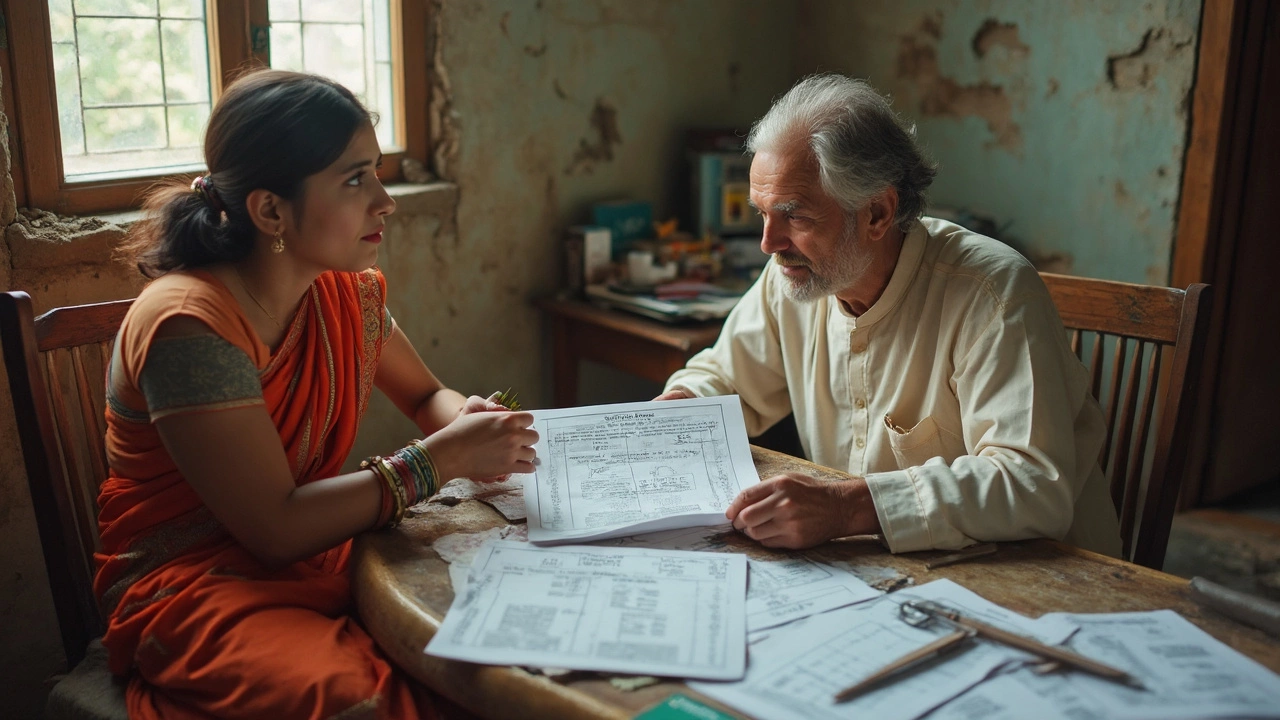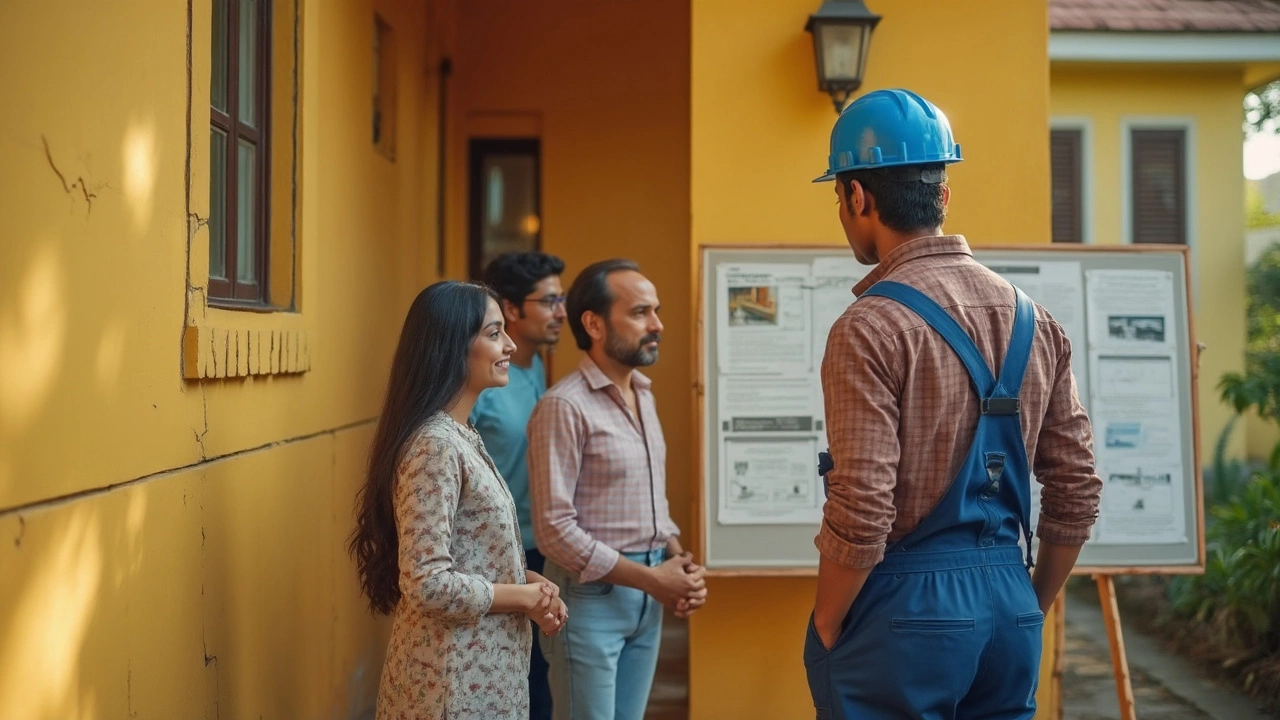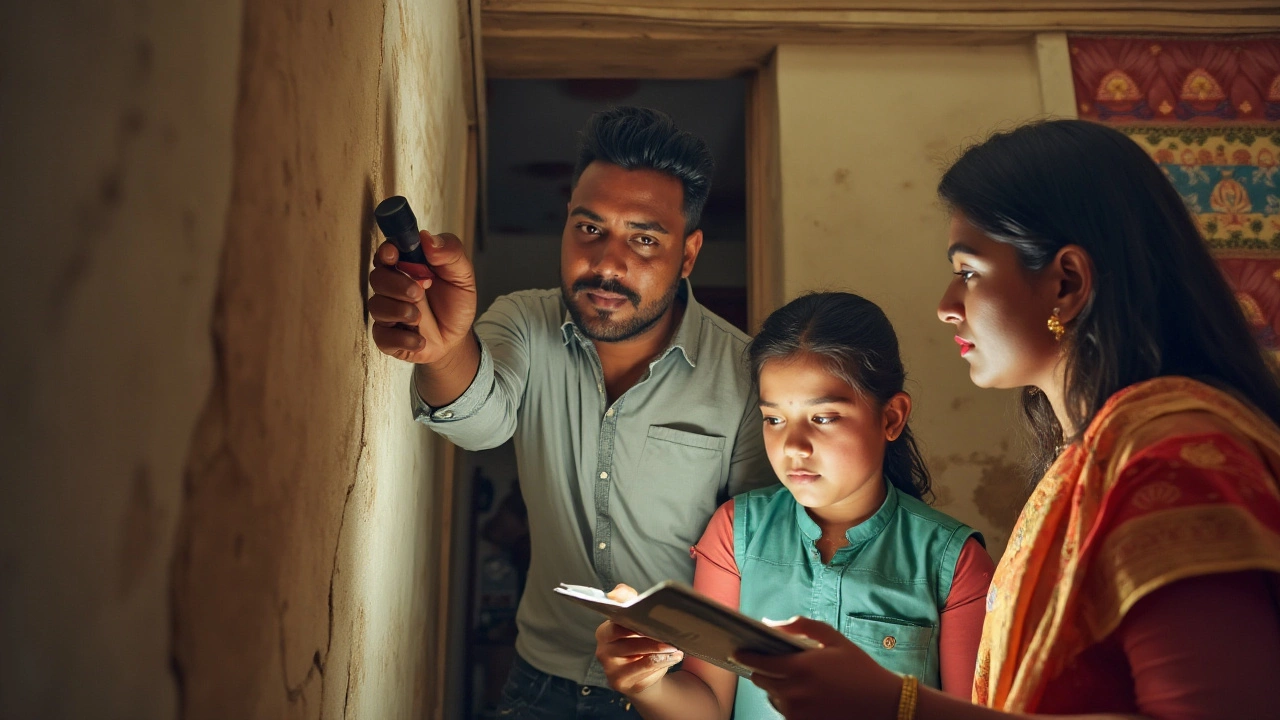Foundation issues aren’t just a headache; they can empty your wallet if you fall for the wrong fix. The truth is, there’s no ‘one size fits all’ method, but some options stand out depending on what’s actually going wrong under your house. Have you seen cracks in your walls or floors, or maybe doors that jam when they never used to? Don’t panic, but don’t ignore it either—these are the first signs your foundation might be waving a red flag.
You don’t need to know how to pour concrete to have a say in how it gets fixed. After noticing those warning signs, the next step is figuring out whether you’re dealing with something small (cosmetic cracks that aren’t moving) or a bigger problem where the house is actually shifting or sinking. That’s when choosing the right repair method really matters. Some fixes work great for minor settling, while others are built for serious movement or faulty soil. The trick is knowing which one matches your situation, so you don’t throw cash at the wrong solution or end up doing the same repair twice.
- How to Spot Real Foundation Trouble
- Why Foundations Fail
- Choosing the Right Repair Method
- Slab Jacking vs. Piering: The Pros and Cons
- Water, Drainage, and Soil—The Silent Enemies
- Smart Prevention and Final Tips
How to Spot Real Foundation Trouble
Spotting foundation problems early can save you a ton of trouble (and money). Most folks don’t notice there’s a problem with their home’s foundation until it really starts acting up. The good news? Most warning signs actually show up inside your house, not just outside.
Here’s what to look out for:
- Cracks popping up in drywall, especially above door frames or windows
- Floors that suddenly aren’t level or seem to be bowing
- Doors and windows that stick or won’t shut like they used to
- Gaps between walls and the ceiling or floor
- Cracks in exterior brickwork or the foundation itself
- Nail pops where drywall nails or screws push out
- Baseboards pulling away from walls
- Water pooling around the foundation or in the basement
Sometimes, people think these are just signs of an old house settling, but don’t brush them off too quickly. The United States Department of Housing and Urban Development says cracks wider than 1/4 inch are usually a sign you should look into repairs. That’s roughly the width of a pencil.
| Warning Sign | Should You Worry? |
|---|---|
| Small hairline cracks (<1/8 inch) | Monitor, but not urgent |
| Cracks wider than 1/4 inch | Get checked by a pro |
| Sticky doors/windows | Common, but can mean bigger trouble |
| Bowing floors or tilting walls | Likely serious—needs action |
It’s easy to miss these red flags until they get bad. If you catch them early, you might avoid full-scale foundation repair down the road. A good tip: Walk around your house every few months and really look. Take photos of any cracks, so you can track if they’re getting worse. That way, you know if you’re dealing with a normal old house, or if it’s time to call in the pros.
Why Foundations Fail
Most houses aren’t built on perfect soil, and that’s a big reason why foundations get into trouble. The ground underneath your house moves a lot more than you’d think, especially if you live in a place with lots of rain, drought, or clay-heavy soil. Clay soil, for example, can swell up when wet and then shrink a ton when it dries out. That stress can end up cracking or tilting your foundation over time.
It isn’t just soil that causes problems. Water takes the top spot when it comes to ruining foundations. Poor drainage, busted gutters, or lawns sloping towards the house can push water right up against the foundation. Over months or years, that water will sneak into tiny cracks, freeze and expand if you’re in a cold area, or just slowly wash away the dirt supporting your home.
- Foundation repair gets expensive mostly because folks don’t spot the early warning signs or take steps to prevent damage.
- No house is immune: new builds and century-old homes both run into trouble if the soil settles unevenly or gets eroded by water.
- Tree roots are another surprise culprit—they can soak up lots of moisture from the ground and actually dry out the soil, causing it to shrink and settle.
- Bad construction can make it worse, especially if shortcuts were taken on soil prep before the concrete was poured.
Want a better idea of how common these problems are? Check out the simple breakdown below.
| Main Cause | Percent of Foundation Problems (USA) |
|---|---|
| Poor Drainage | 38% |
| Soil Swelling or Shrinking | 31% |
| Tree Roots | 14% |
| Poor Construction | 10% |
| Other (earthquakes, nearby construction, etc.) | 7% |
So, if your place is built on shifting soil, has clogged gutters, or is surrounded by thirsty trees, you could be looking at trouble down the road. Spotting these issues early is half the battle in keeping your home level and safe.
Choosing the Right Repair Method
So you’ve spotted a cracked wall or a wonky door, and you’re wondering what comes next. Here’s where you need to slow down and size up the problem before picking a fix. Your choice depends on the root of the issue—whether it's subsiding soil, water pooling around your house, or just age catching up with your slab. The most common foundation repair methods out there are slab jacking, pier and beam adjustment, and full underpinning with piers.
Here’s a peek at what those options look like in real life:
- Slab Jacking (Mudjacking): Great for sinking concrete slabs. Contractors pump a special mix under a sunken slab to lift it back up. It’s quick (sometimes just a few hours) and less invasive, but doesn’t suit every type of foundation—especially if the soil is unstable or you have big cracks.
- Pier and Beam Repair: Best if you have a crawl space under the house or an older wood-beam foundation. This involves resetting or replacing beams and shimming things level. It’s tailored to homes built before the ‘60s or houses where moisture and shifting have played havoc under the floors.
- Concrete or Steel Piers: If your house is sliding, sinking, or built on dodgy soil (looking at you, Texas clay), piers go deep—sometimes 20 feet or more—to anchor the home where the soil is stable. This method lasts a long time, but yes, it costs more and takes longer.
Wondering what’s most common or what people usually pay? Here’s a quick breakdown:
| Repair Method | Average Cost (USD) | Time to Complete | Best For |
|---|---|---|---|
| Slab Jacking | $3,000 - $7,000 | 1 Day | Sinking slabs, minor settling |
| Pier & Beam Adjustment | $5,000 - $15,000 | 2-7 Days | Older homes with crawl space |
| Concrete/Steel Piers | $7,000 - $25,000+ | 1-3 Weeks | Major settling, unstable soil |
Don’t forget—getting a pro to diagnose the real problem is worth every penny. Sometimes repairs are overkill; other times, a cheap patch job just delays the hard work. Ask each company what method they’re recommending and why. If they only push one option for every problem, that’s a red flag. A trustworthy specialist will take soil samples, look at past repairs, and explain all your choices without hardcore upselling.

Slab Jacking vs. Piering: The Pros and Cons
When it comes to foundation repair, most folks hear the terms "slab jacking" and "piering" tossed around. These are two heavy hitters in the repair world, but they tackle different problems and come with their own upsides and downsides.
Slab Jacking (also called Mudjacking): This method works best when you have a concrete slab that has sunk but isn’t broken apart. Technicians drill small holes in your slab and pump a cement slurry or foam underneath. The material fills any empty spaces, lifts the slab back up to where it should be, and the holes are patched up. It’s quick, there’s minimal mess, and the whole job can sometimes wrap up in half a day. Plus, you can walk on the area almost immediately after finishing.
Here’s when slab jacking usually shines:
- Sunken driveways, patios, or garage floors
- Minor settling with no serious cracking
- Fast, budget-friendly fixes (typically $500 to $1,500 for smaller jobs)
But there are downsides. If the underlying soil is shifting, slab jacking is just a band-aid. It won’t fix up bigger foundation movement and sometimes the same area can sink again if the root problem isn’t solved.
Piering (or Piling): This is the go-to for serious foundation trouble. Workers install steel or concrete piers deep into the ground until they hit solid, stable soil or bedrock. Then, the weight of your house is transferred to these piers, which stops any further sinking or sideways movement. Piering fixes not just slabs but also entire homes with crawl spaces or basements.
Here’s the good stuff about piering:
- Works for major foundation movement, especially where the soil is unstable
- Often comes with a long or lifetime warranty
- Addresses the root cause by bypassing bad soil altogether
But it’s not cheap. The average cost for piering ranges from $1,000 to $3,000 per pier, and most homes need several. There’s more disruption to landscaping and sometimes you’ll hear some banging during installation. But, for homes that are literally shifting, this is often the only real solution.
| Method | Best for | Average Cost | Time to Complete | Durability |
|---|---|---|---|---|
| Slab Jacking | Minor settling, level slabs | $500-$1,500 (small areas) | Hours | Temporary (may re-settle) |
| Piering | Serious settling, unstable soil | $4,000-$15,000+ (whole house) | Days | Permanent (with warranty) |
Here’s a tip: Before choosing, have a reputable foundation pro do a proper inspection. Don’t cheap out on this—knowing if you just need a quick lift or an overhaul can save you thousands. And don’t trust anyone who pushes the same fix for every job. The real answer depends on your actual problem, not what the contractor happens to like best.
Water, Drainage, and Soil—The Silent Enemies
You’d be surprised how much water and soil movement cause foundation nightmares. It's never just a crack in the concrete—nine times out of ten, it’s the hidden moisture under your house, or the way your soil shifts after a rainy week, that kicks off those problems. In fact, the American Society of Civil Engineers has said more than half of all U.S. homes get damaged by expansive soils at some point. That’s wild—and expensive.
So how does water get involved? It sneaks in when gutters overflow, when your homesite has bad drainage, or even from leaking pipes underground. Too much water makes clay soils swell up, then shrink like crazy when things dry out. That constant motion puts a ton of stress on foundations. Sandy soil is less dramatic, but it doesn’t hold anything steady when water washes through it.
Want to see what problems water really causes? Check out this table:
| Problem | How Water Makes it Worse |
|---|---|
| Foundation Cracks | Soil swelling and shrinking pushes and pulls on slab |
| Sticking Doors/Windows | Foundation shifts make frames go out of square |
| Basement Flooding | Poor drainage lets water pool against the walls |
| Mold/Mildew | Constant moisture creeps up through cracks |
Here’s what you can do to cut these problems down to size:
- Make sure gutters and downspouts channel water at least 6 feet away from your foundation.
- Double-check that the ground around your house slopes away, not toward your walls.
- Fix leaky outside faucets and sprinkler lines fast—little leaks can cause huge issues over time.
- If you’re building new, choose soil that drains well or get advice about a moisture barrier under your slab.
- Still getting water? A French drain system can carry it away underground before it soaks in.
If I learned anything from years of homeowner headaches, it’s this: Foundation nightmares usually start with water nobody noticed. If you tackle drainage, you’ll cut off the problem before it drains your bank account. Oh, and regular checkups are no joke—just like with a car, small fixes early are always cheaper than a big repair later.
Fixing foundation repair issues gets a whole lot easier—and cheaper—when you stop water and soil from making things worse, right from the start.
Smart Prevention and Final Tips
The best way to save yourself from stressful and expensive foundation repair is to not need it in the first place. Regular checks can catch small issues way before they turn into big wallet busters. Most pros recommend giving your home a quick look every three to six months, especially if you live somewhere with a lot of rain, droughts, or clay soil.
Water is the silent troublemaker here. Poor drainage can lead to soil expansion and contraction, which pushes your foundation around over time. Some real numbers: homeowners with consistent drainage issues are up to 80% more likely to face serious foundation trouble within ten years. Here’s a quick table with stats based on insurance and repair assessments:
| Issue | Chance of Foundation Damage (%) |
|---|---|
| Poor Drainage | 80 |
| Clay Soil | 65 |
| No Gutters | 55 |
| Mature Tree Near House | 45 |
Here’s what you can actually do to keep your foundation in good shape:
- Check gutters and downspouts—make sure water moves away from your house by at least 6 feet.
- Add soil or adjust grading so water flows away, not toward your foundation.
- Fix leaks and broken pipes right away—slow drips add up fast under a slab.
- Water your foundation during droughts. In places with clay soil, put a soaker hose 1-2 feet away from the house and run it occasionally so the soil doesn’t pull away and crack.
- Trim big tree roots that aim for your foundation. Roots suck the moisture out and cause uneven shifting.
- Keep heavy stuff—like stacked firewood or dense garden beds—away from your foundation edges.
When you notice a problem, get a pro opinion quickly. Endless online searching won’t beat someone who actually looks under the house. And don’t fall for wild promises—no repair is really "one and done" if you ignore natural forces like water and expanding soil. Budget for regular maintenance, because small repairs now can save you ten times as much long term. Foundation health is kind of like brushing your teeth—skip it, and you’ll pay for it later.




